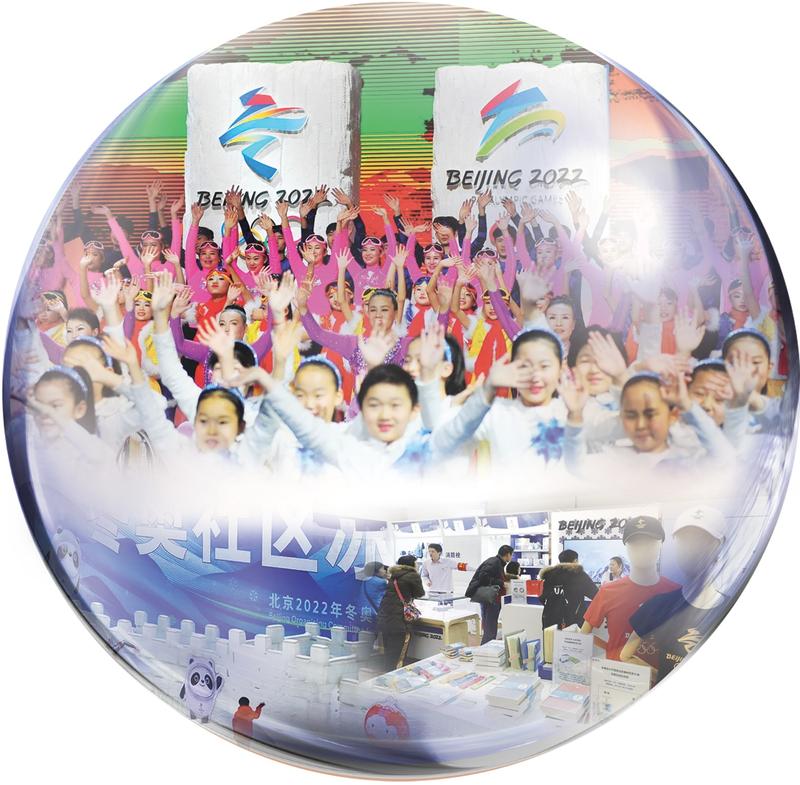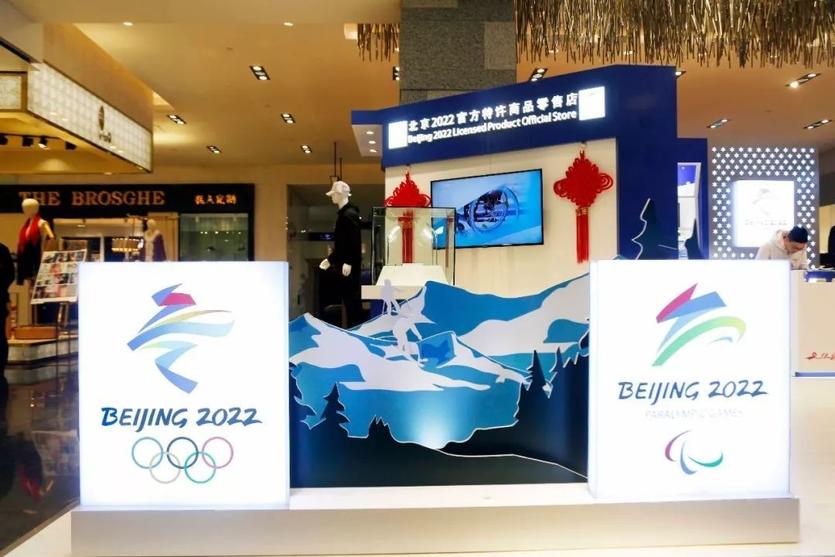The upcoming 2022 Beijing Winter Olympics has sparked intense enthusiasm for winter sports in the Greater Bay Area. Zeng Xinlan and William Xu report from Hong Kong.

Offering a beacon of hope amid the pandemic gloom, the 2022 Beijing Winter Olympics, which is less than five months away, has ignited people’s interest in ice and snow sports in the Guangdong-Hong Kong-Macao Greater Bay Area.
Along with the supportive policies, officials, businesses and tourism enthusiasts are looking to next year’s Winter Olympics as a springboard for the future growth of the ice and snow industry. The games will take place from Feb 4-20.
As the Chinese mainland’s largest source of tourists and with huge potential for ice and snow tourism consumption, Guangdong has made remarkable progress in ice and snow sports tourism projects
Zeng Xiaofeng, deputy director of the Department of Culture and Tourism of Guangdong province
Zeng Xiaofeng, deputy director of the Department of Culture and Tourism of Guangdong province, highlighted local consumers’ passion for ice and snow leisure tourism at the Global Snow Tourism Forum, organized by Guangzhou Lingnan Group Holdings and Guangzhou Kailas Sports Product in the Guangdong provincial capital on Sept 10.
As the Chinese mainland’s largest source of tourists and with huge potential for ice and snow tourism consumption, Guangdong has made remarkable progress in ice and snow sports tourism projects, Zeng said.
He said that Guangdong, with a population of more than 100 million, will be a major contributor to the nation’s goal of having 300 million people participating in winter sports by next year — a national plan to support the hosting of the 2022 Winter Olympics in Beijing and Zhangjiakou, Hebei province.
The forum offered an opportunity to strengthen communication between industry professionals in Guangdong and other regions, and deepen collaboration between winter-sports tourist source markets, such as Guangdong, and tourism destinations in northern China.
Guangdong’s natural edge in promoting ice and snow leisure tourism primarily lies with its consumers who are more vigorous and with strong consumption power, said Zhang Penghao, marketing director at ski resort Lake Songhua Resort, which is located in the northeastern province of Jilin. The resort caters to some 100,000 visitors from the Greater Bay Area each winter season.
 An inside view of the 2022 Beijing Winter Olympics official-products store in Beijing. (PHOTO PROVIDED TO CHINA DAILY)
An inside view of the 2022 Beijing Winter Olympics official-products store in Beijing. (PHOTO PROVIDED TO CHINA DAILY)
Spending power
Guangdong’s consumers are young and female-dominated, with strong spending power and high demand for skiing gear, coaching and supporting facilities, Zhang said. “The ski enthusiasts have an updated mindset about vacation and understanding of customer services. In recent years, underpinned by the Winter Olympics sentiment, the overall skiing level in the Greater Bay Area has enhanced rapidly with an enlarged client group, taking sport sentiment to a higher level,” Zhang added.
Qu Hongtao, senior operations director of Guangzhou Sunac Ice and Snow Culture and Sports Development, said the Greater Bay Area has huge market potential for winter sports because of its developed economy and robust purchasing power.
He told the forum that skiing trips on the mainland had exceeded 20 million in 2019 with more cross-province visitors in the south, the proportion of which was 23 percentage points higher than that of visitors in the north, citing the China Ice and Snow Tourism Development Report 2020.
“It’s not the end, but a beginning,” said Zhang. “The Winter Olympics sentiment, along with supportive policies on outdoor sports under the pandemic new normal, has offered a prime opportunity for the development of ice and snow tourism.”
The upcoming Winter Olympics has fueled people’s interest in ice and snow sports and tourism, giving a shot in the arm for winter sports’ development, industry experts told the forum.
He Wenyi, secretary of the Peking University National Sports Industry Research Foundation, said that with various development plans and policy support issued after 2015 when China won the bid to host the 2022 Winter Olympics, the nation’s ice and snow leisure tourism has reached a new stage.
According to national plans, the ice and snow leisure business is expected to soar to 1 trillion yuan (US$155 billion) by 2025, with more than 600 ice-skating rinks and 5,000 schools providing winter sports education.
 A mall store on Wangfujing Street, Beijing. (PHOTO PROVIDED TO CHINA DAILY)
A mall store on Wangfujing Street, Beijing. (PHOTO PROVIDED TO CHINA DAILY)
Driving tourism
Holding major sports events is an ideal way to drive local tourism and enhance the influence of host cities, He said. The popularity of winter sports has brought more tourists to the country’s ice and snow travel destinations, which can improve the business model of the combined sports and travel industry. A good business model of such a combination is of significant value to tourism, culture and the economy, he said.
Qu agreed that ice and snow sports events and winter mass sports activities can be an ideal touch point in building up sports sentiment. “For the 2021 to 2022 snow season, winter sports sentiment is expected to reach its peak, fostering a larger customer base and forwarding an industrial upgrade,” Zhang said. “The Winter Olympics will bring about a qualitative change in the volume of the ice and snow industry to the host cities in five to 10 years after the event, driven by an enlarged ice and snow tourism population.”
The Winter Olympics is indeed a fresh beginning, said Kris Van Goethem, managing director inbound of Thomas Cook China. “Many people in the Greater Bay Area have traveled to Europe and have experienced the best ski resorts and facilities. But now, with the upgrading of the domestic ice and snow industry driven by the Winter Olympics passion, they don’t even need to travel overseas.” he said.
Industry experts also called for cross-sector and cross-border collaboration to nurture the emerging market and overcome the hurdles ahead. “Thanks to the Winter Olympics, the nation’s winter sports industry has entered a period of development, with the facilities of several top resorts, such as Lake Songhua Resort, reaching world standards,” said Zhang.
He Wenyi urged related parties to promote cross-industry development of ice and snow tourism and strengthen collaboration between winter sports and tourism enterprises. This would help complete the industry chain of ice and snow tourism, he added.
“To fully utilize the huge market potential in the Greater Bay Area, firstly, we need to provide more ice and snow tourism products by building more indoor skiing facilities and providing more entertaining activities. We also need to continue educating consumers to make the pie bigger,” said Qu.
Sun Na, branding director of the Guangzhou-based sports gear producer Kailas, which specializes in snow mountain climbing equipment, said with abundant snow mountain resources and improved living standards, the sport will have a sound future.
Contact the writers at xinlanzeng@chinadailyhk.com


